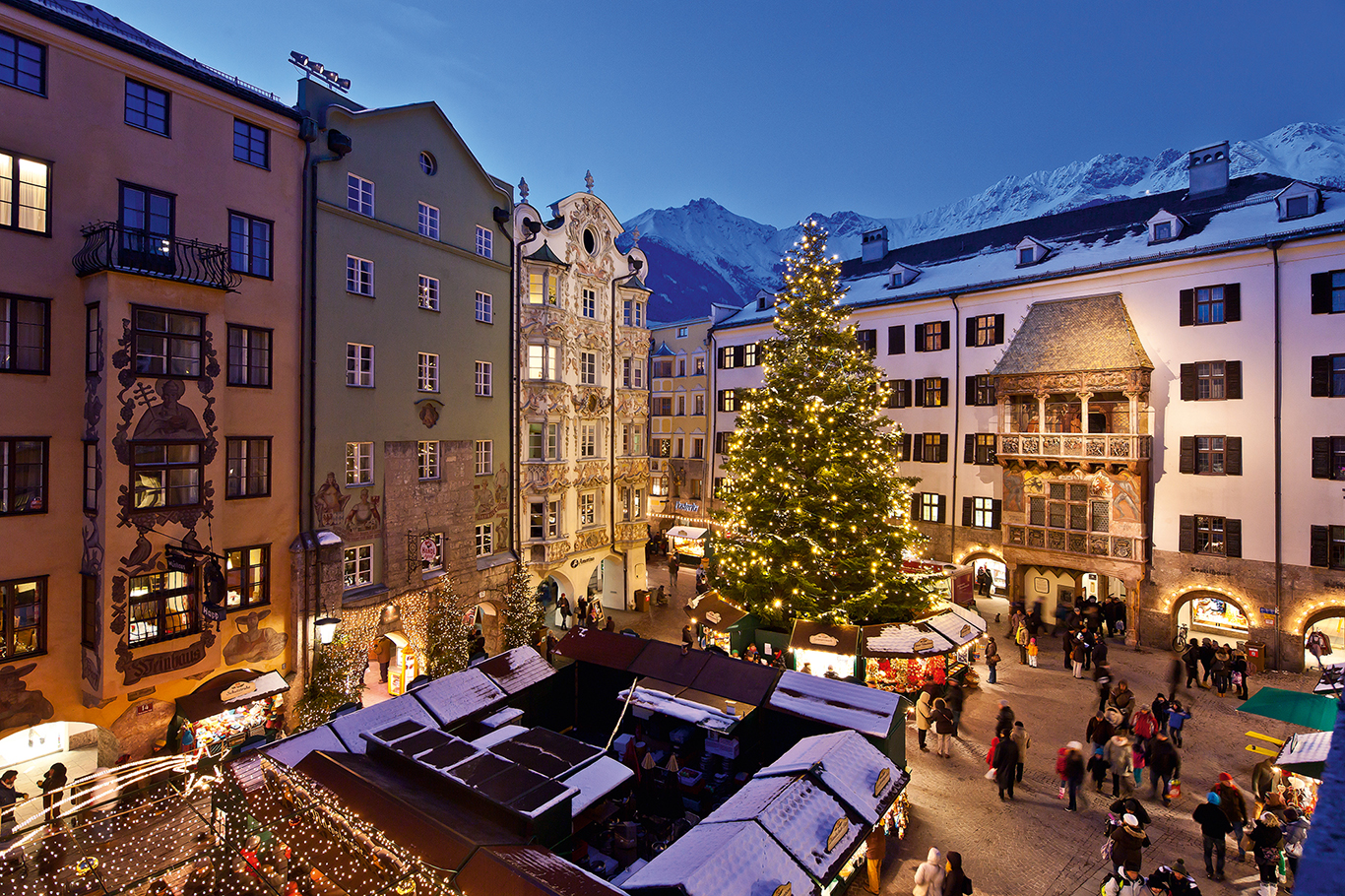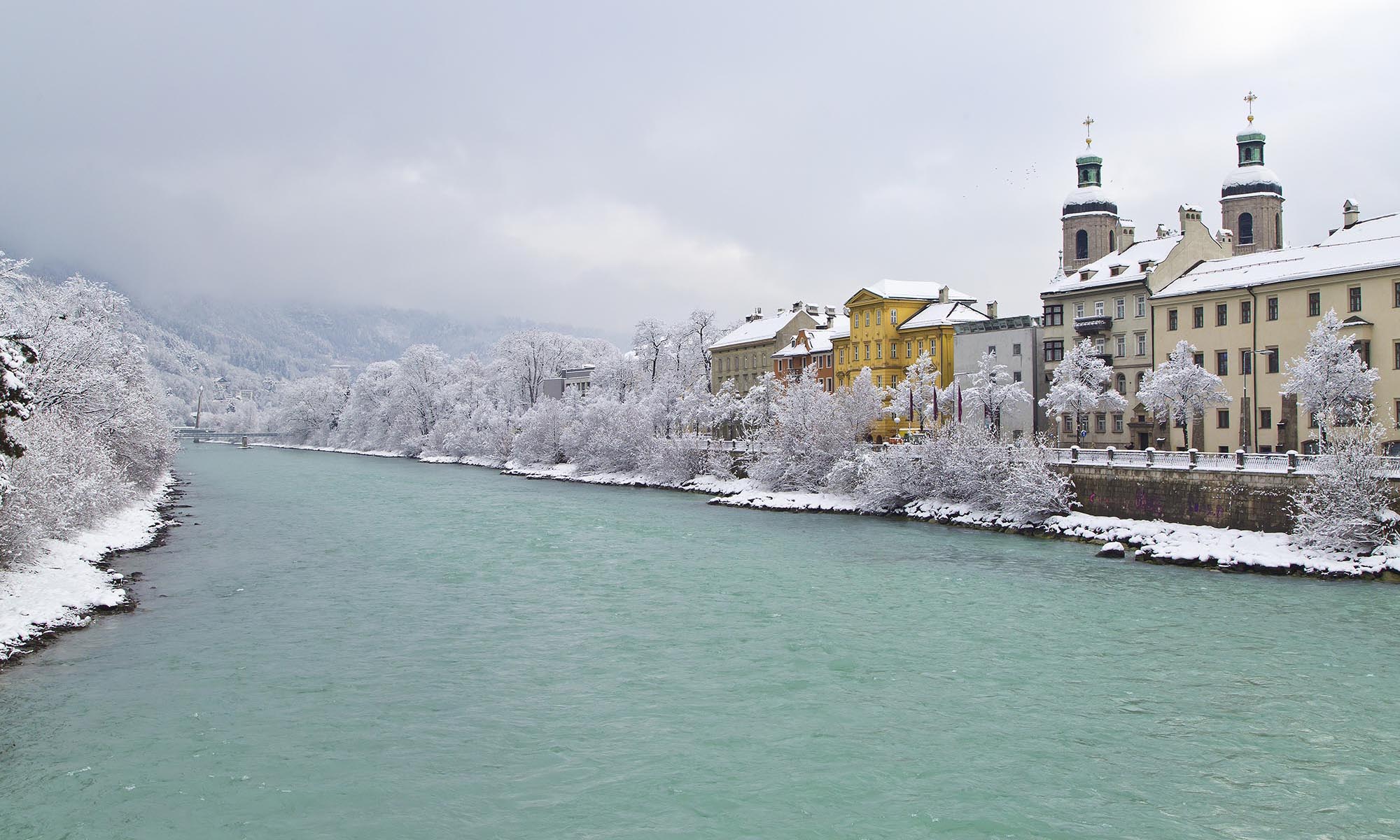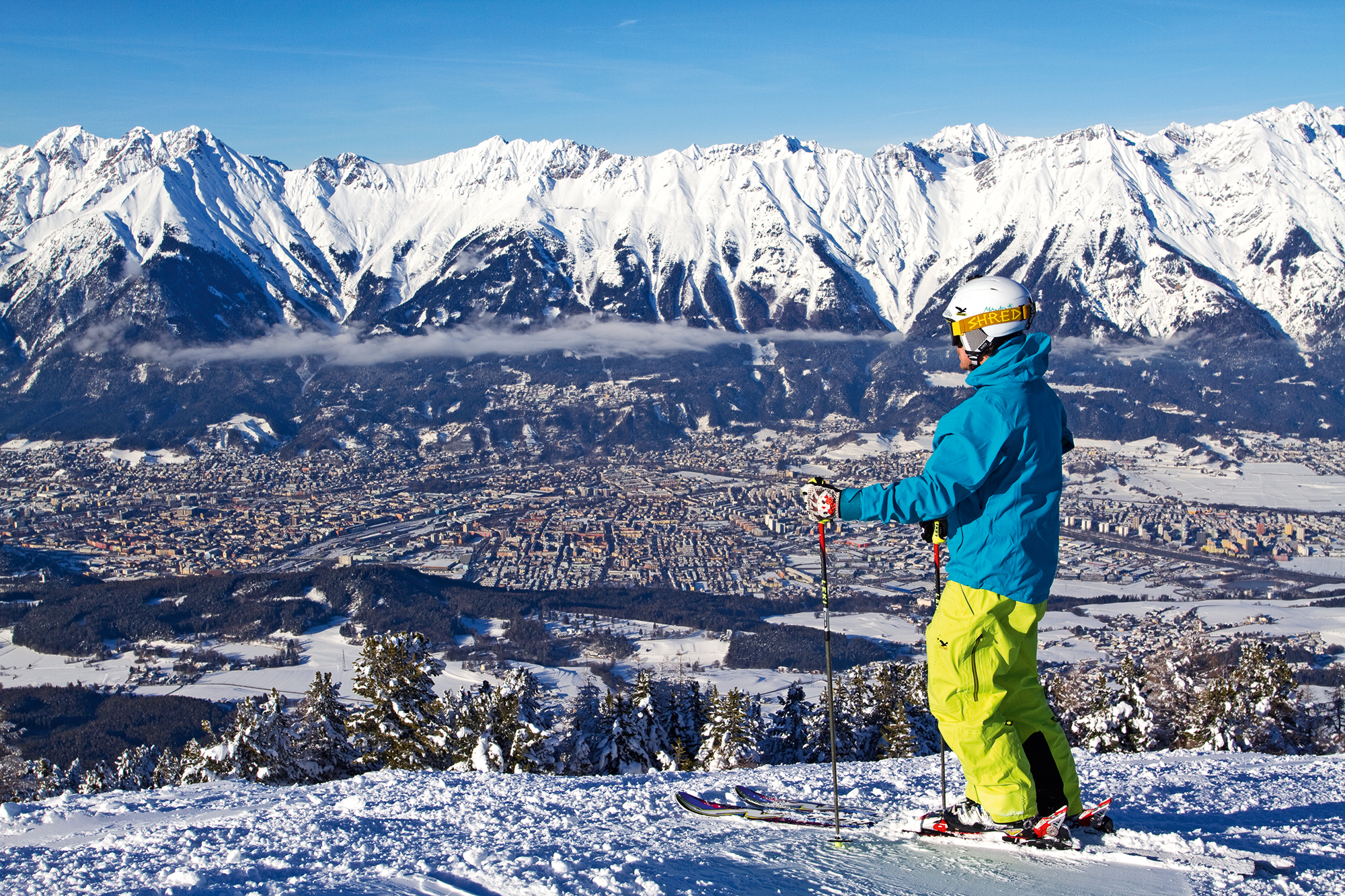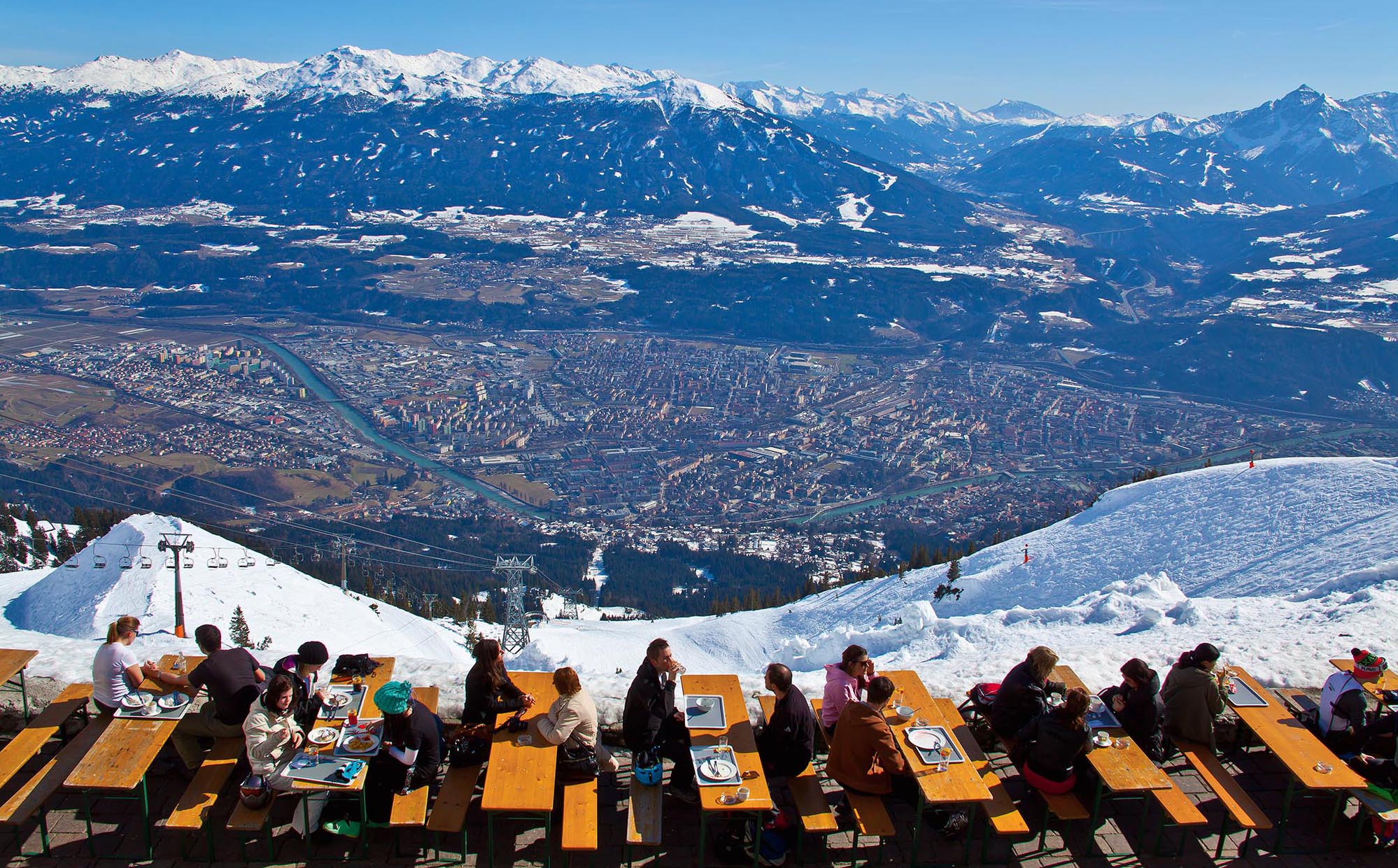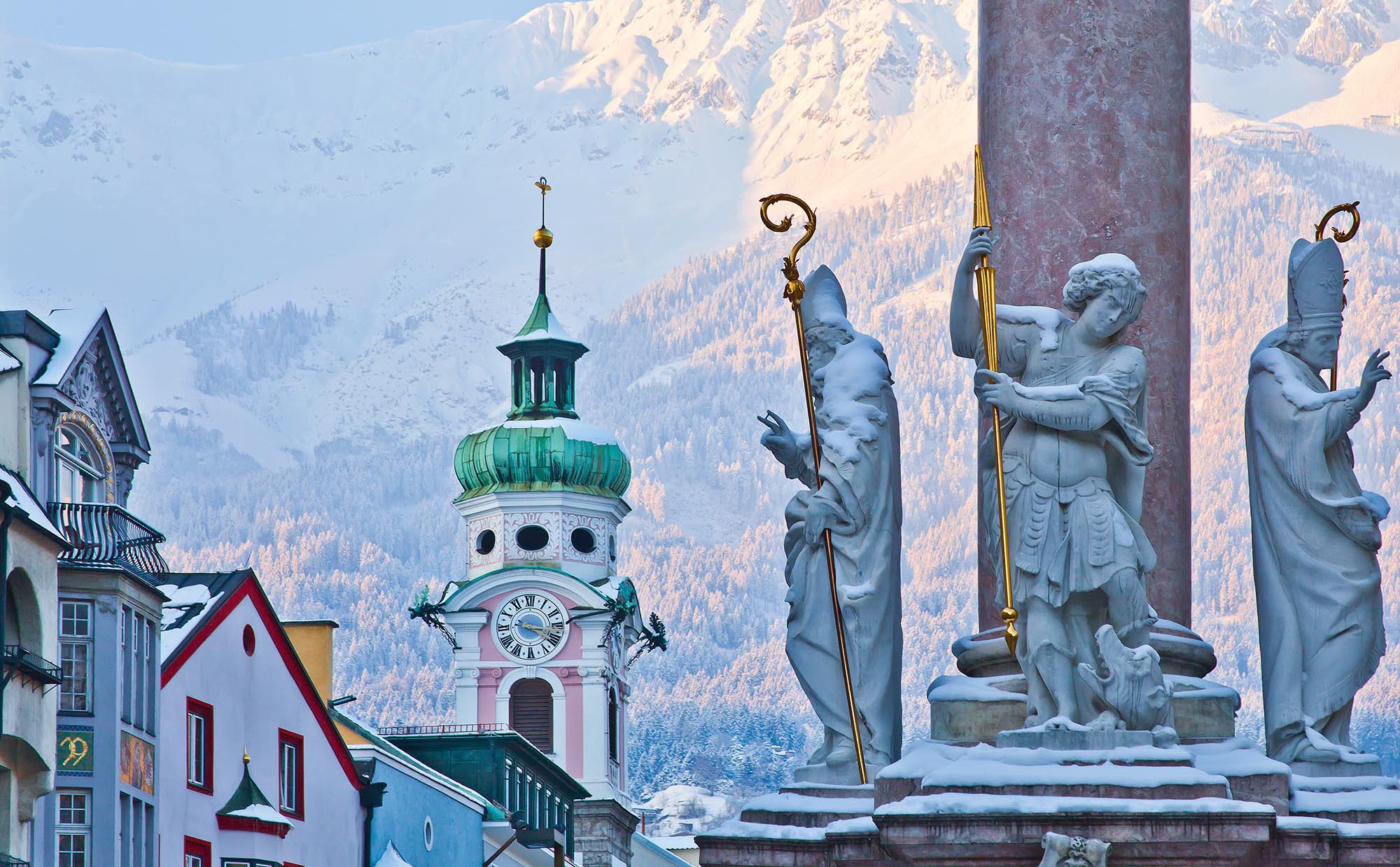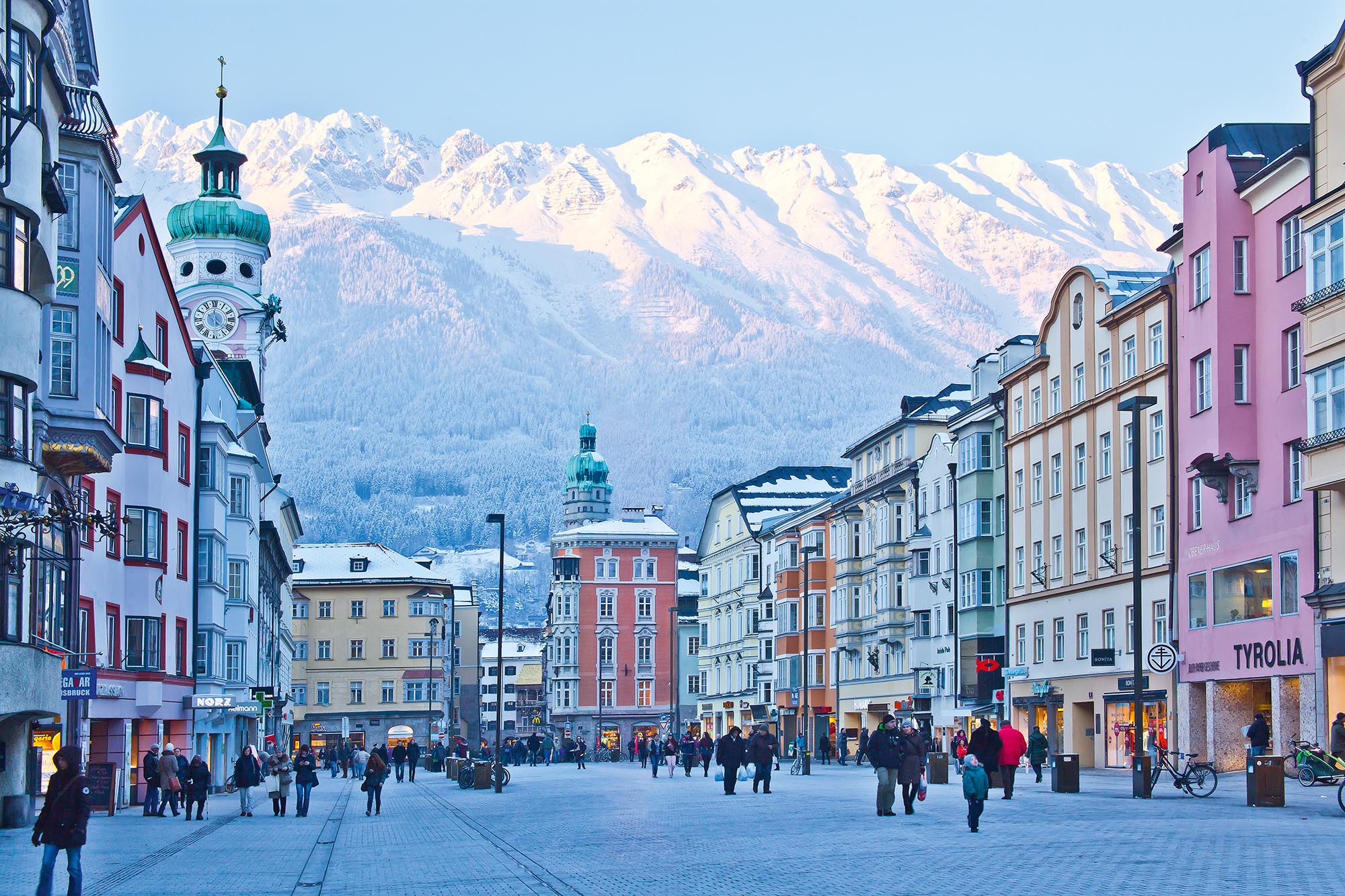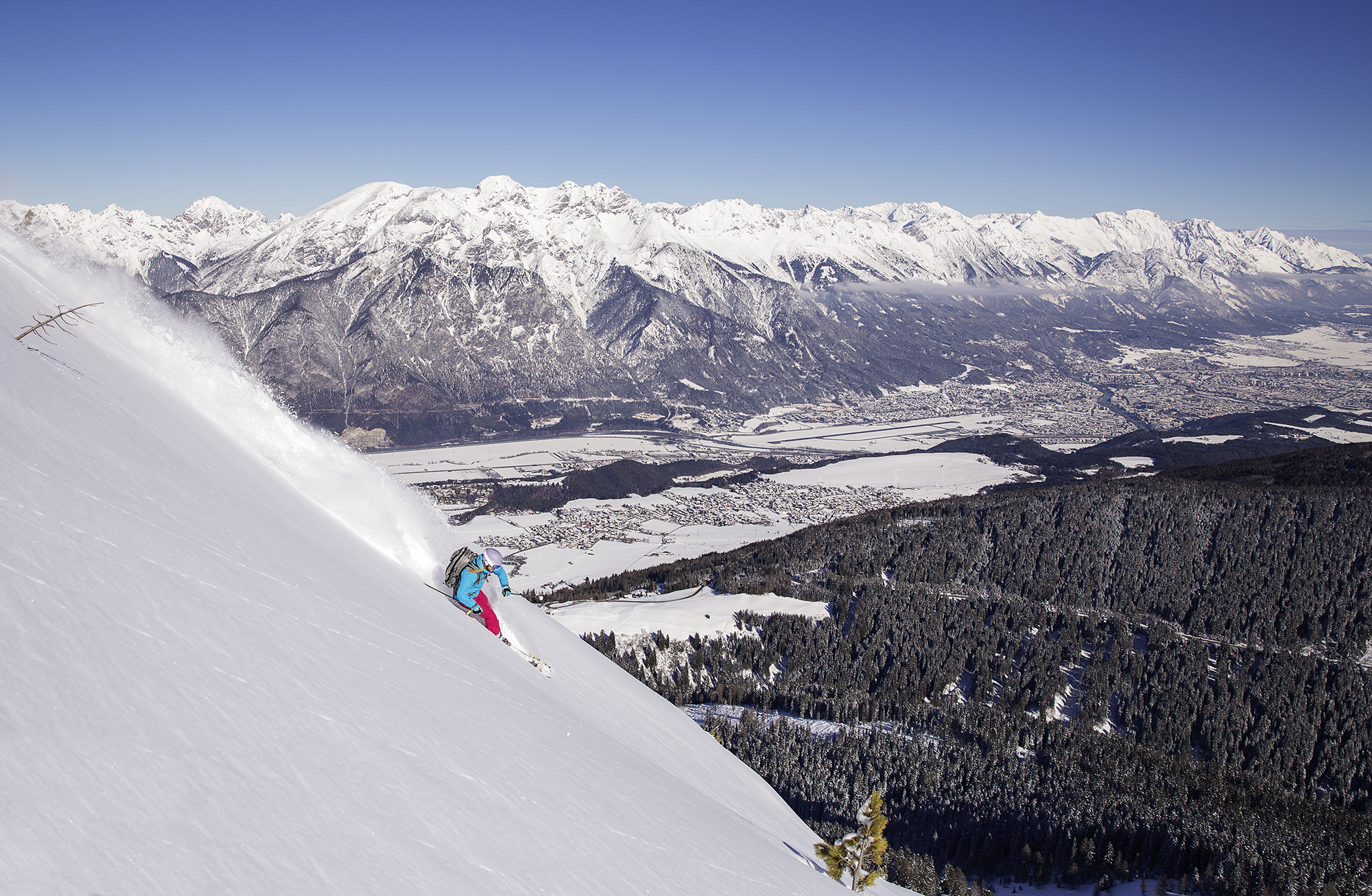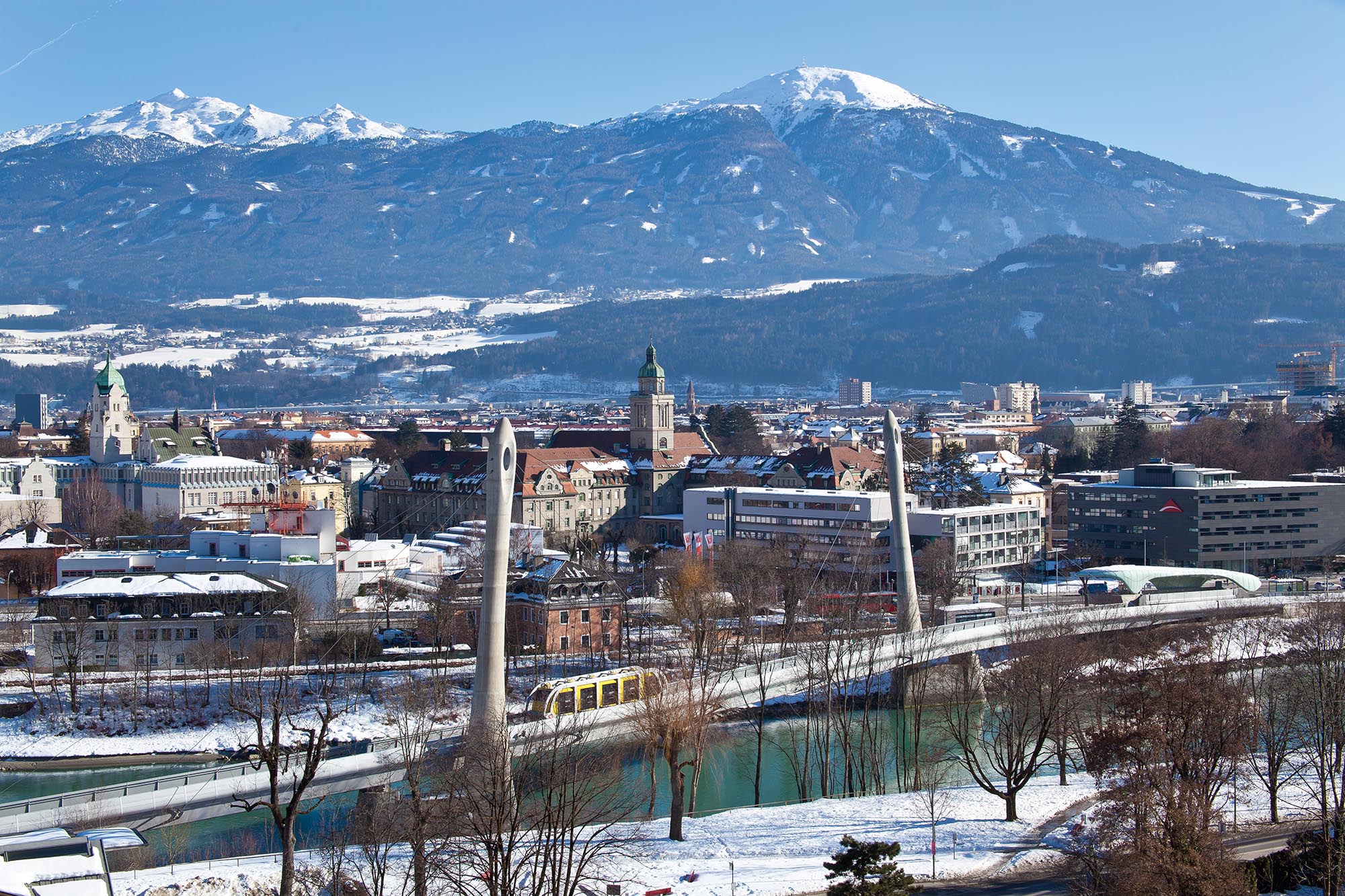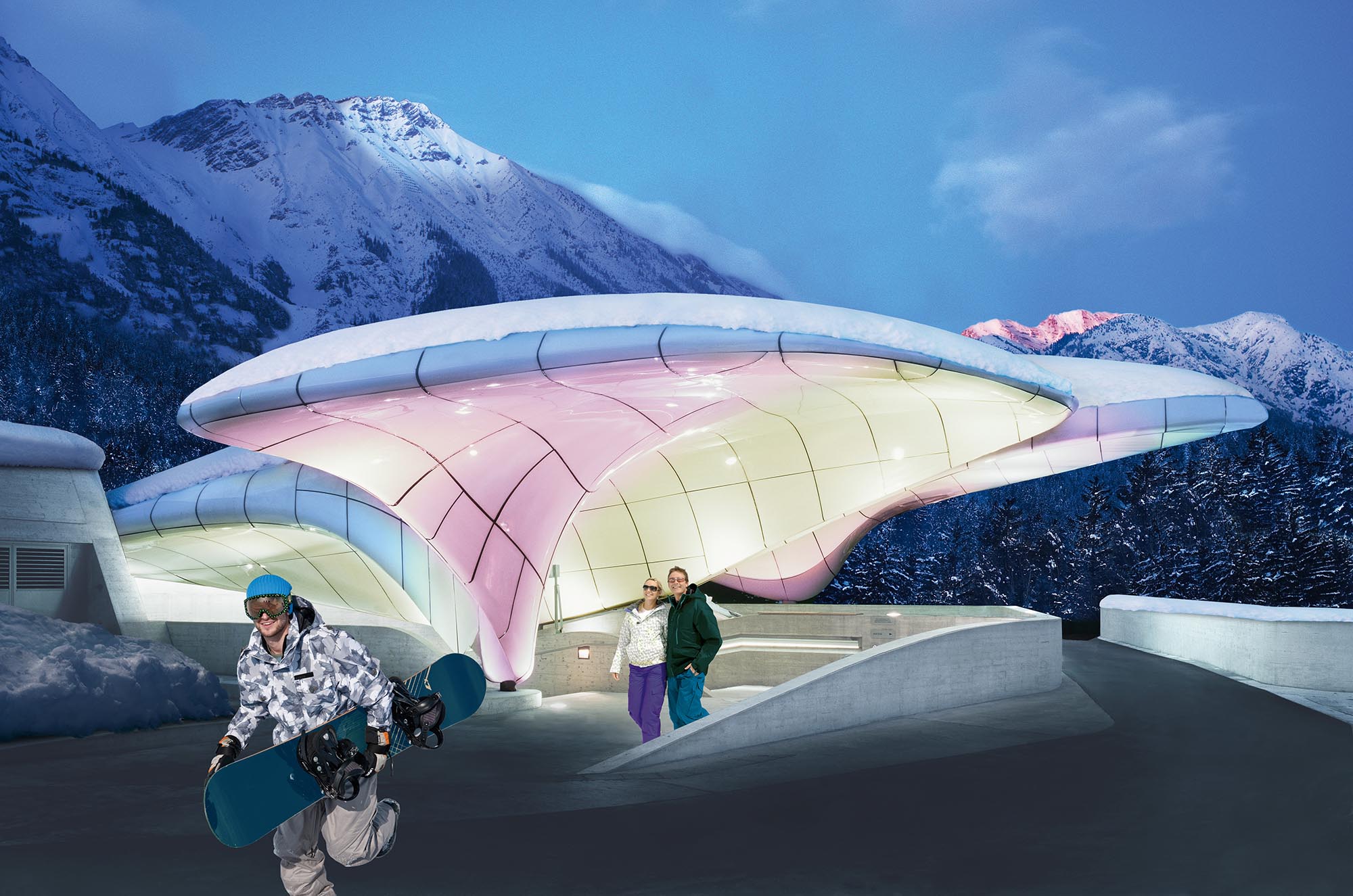Innsbruck, also called “The Capital of the Alps” is rich in traditions and open to the world. The Tyrolean capital has always been a city of many faces: the imperial monuments and contemporary urban design, the Olympic records and opulent past splendour.
Anyone who visits the Tyrolean Capital, Innsbruck, will immediately notice the close coexistence of culture and nature. Located on Europe’s most important transport lines between North and South, East and West and nestled in the mountains, the city was and still is a place of meeting, of cultural exchange, trade, science, and – above all more recently – of sport.
This union is visible all around, even in the middle of the historic city centre with its artistic buildings, museums and churches: the view down the splendid Maria Theresien street to the medieval old town with the majestic Nordkette mountain chain providing a stunning backdrop.
If you stroll through the center you learn a lot about the history of the pretty old town: Habsburg Emperor Maximilian I (1459-1519), in particular, shaped the image of Innsbruck at the transition from medieval to Renaissance and made the city the centre of his empire, which stretched from Spain and Burgundy to Hungary. He was responsible for the building of Innsbruck’s symbols, the Golden Roof and the Zeughaus.
New is the funicular railway that goes up to Hungerburg, with a stop at the Alpine Zoo. The stations of this facility with their organic shapes designed by Zaha Hadid, architect of the Bergisel ski jump, recall the constant flow of ice and glaciers. At Hungerburg you can board the Nordkettenbahn cable car to continue up to Seegrube (1,905 m) and Hafelekar (2,330 m).
We would like to recommend a visit of these locations:
- Bergisel Ski Jump
- Hofburg Imperial Palace
- The Ambras Castle and Park
- Nordkette mountain range and Nordkette cable cars
- The Golden Roof
- The Court Church
- Cathedral of St. James
- Swarovski Crystal Worlds
- The Alpine Zoo
- Tirol Panorama Museum with Imperial Infantry Museum
- City Tower
- Kaufhaus Tyrol Shopping Center
- Tyrolean State Museum Ferdinandeum
- Helbling House
- Botanical Garden
- The Europe Bridge (Europabrücke)
- Imperial Gardens
In summary, it can be said, that the Tyrolean capital with its 130,000 inhabitants is a lively modern city offering extensive sports and leisure facilities and a unique ambience for residents and visitors. For more information, please click here.
…and there is an iOS App for sightseeing.
